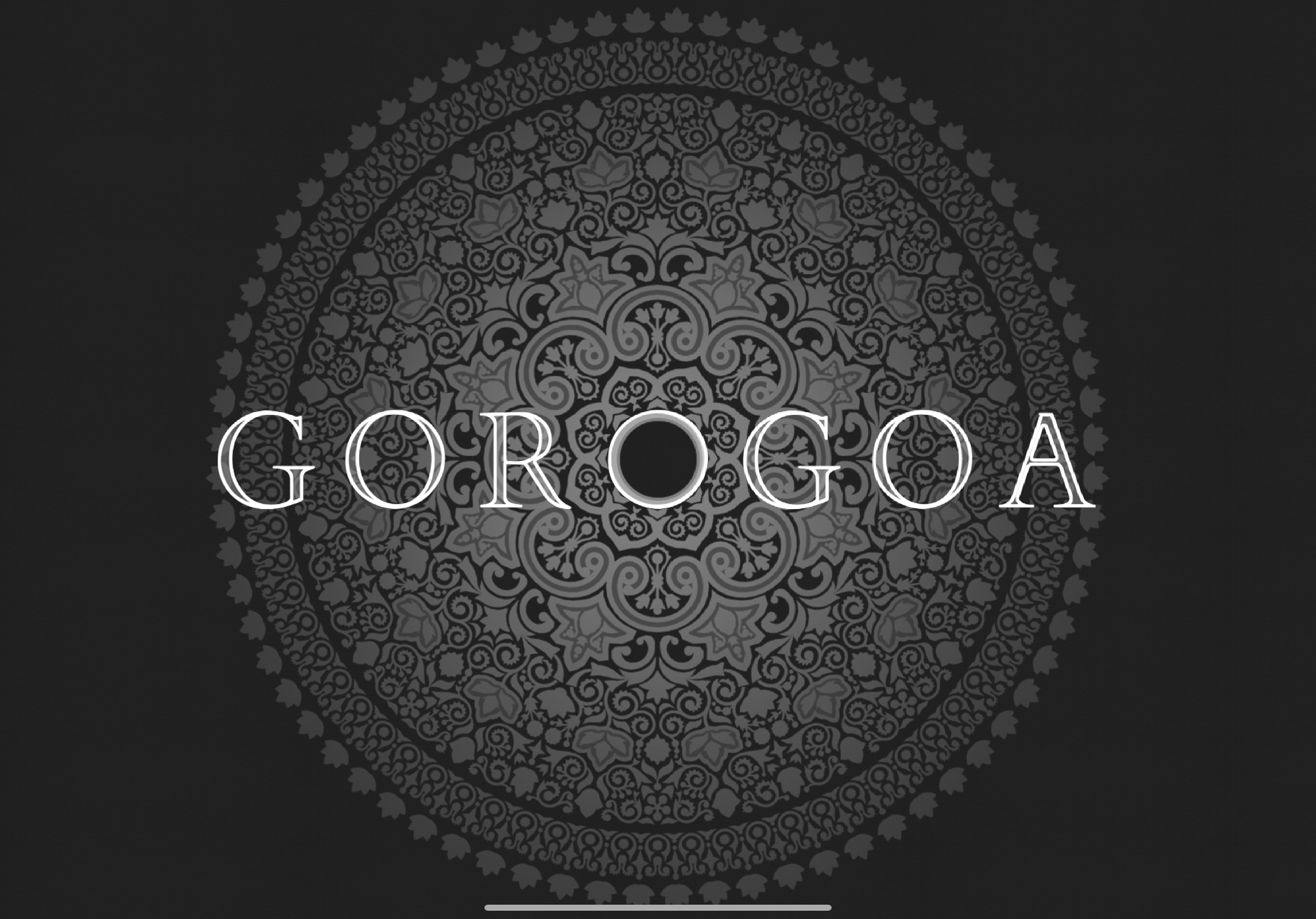Gorogoa fully utilizes the unlimited capacity of boundaries through frames, enabling players to navigate through time and space in game procedures, and successfully creates a unique non-linear, dreamlike narrative, fostering the aesthetics of challenge and fantasy.
Gorogoa is a puzzle game developed by Jason Roberts and published by Annapurna Interactive. It is available on iOS, Android, Steam, Switch, PS4, Xbox, and other platforms. I played it on my iPad Pro.
In Gorogoa, players engage with the dynamic of constant navigation through space and time, which demonstrates a creative use of boundaries, leading to the aesthetics of challenge as they complete puzzles, and the aesthetics of fantasy as they unlock more about the story. In each panels players can zoom in or out, move towards different direction, split the layers to discover something new, or merge the layers, turning the current frame into something else. By doing so, the player can connect the boy in red (the protagonist) through moments of his life and spaces in different dimensions to achieve the game objective: gathering the five colors of flames. For example, to get the yellow flame, I needed to arrange the clock needle to a shape that matches the instruction paper on the top left frame. I was able to achieve this through overlaying the clock on the top left frame with a thermal meter in the top right frame, connected to a container that was heated by fires from the bottom right frame (Fig.1). The three frames are in different times and spaces, but the game designer allows heat, power, information, objects, and even humans to cross over boundaries under unique circumstances – when they are connected visually, like puzzles. The boundaries between different frames also create contrast between past, present, and future. Although the game starts with the boy in red, it is hard to determine what moment is the present as we fly through different moments of the protagonist’s life, seeing him contemplating, walking in pilgrimage, fighting as a soldier, etc. The ability to connect through frames and move freely within one frame was central to the creation of this dreamlike narrative unbound by time and space. The mechanic of boundary allows players to ponder and reflect on the hidden story, enjoying the fantasy through solving the challenging puzzles.
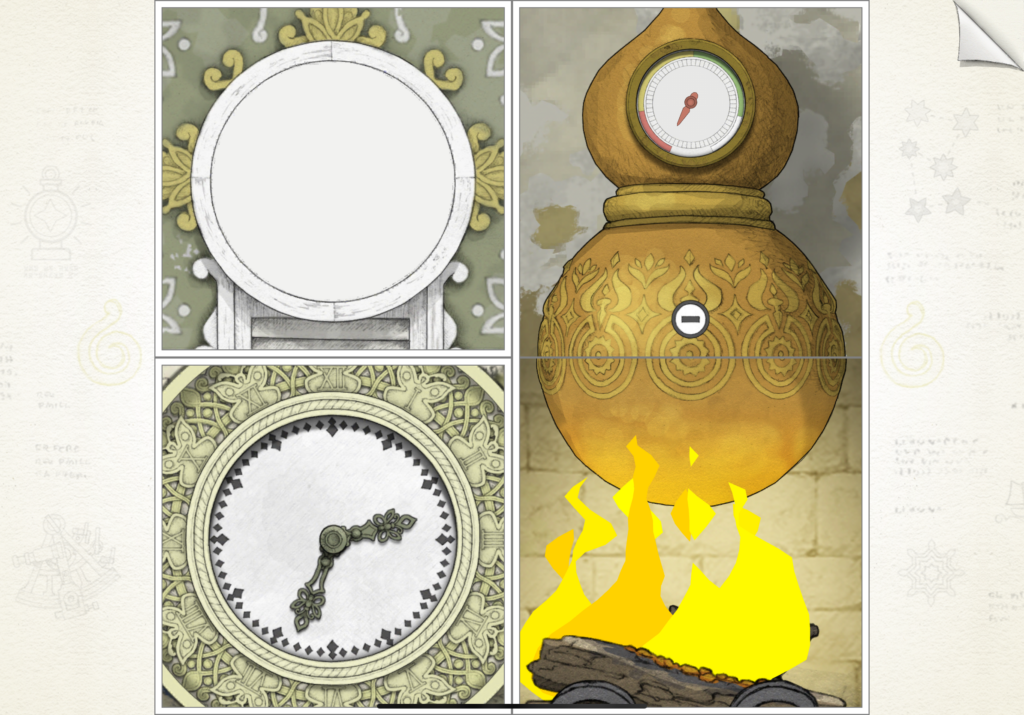
Fig.1 Transfer heat across boundaries
Although there is no linear narrative, Gorogoa has a clear game procedure and objective, with elements cohesively linked to the main task – gathering the five colors of flames. As players navigate through these pieces through puzzles, they gradually build up the fantasy and would eventually be deeply moved by how the mission transcends time and space. This is most evident in the part where the player needs to move the protagonist through five old photos, by utilizing gears from the sun, a china plate, and paintings on book spines. I was deeply touched by the genius design of the sun as a gear, moving as the older protagonist moved below, shaking a bell (Fig.2). I sensed the parallel of the younger protagonist moving through pictures to obtain the flame, and the older protagonist moving in physical space on pilgrimage. I think potentially the little boy’s journey through time and space, guided by the player, is a metaphor for his long journey towards the same goal in life. Moreover, there are many memorable moments such as the contrast of a room in good condition versus the same room destroyed by war, and a china plate that was once beautiful but later broke into pieces. The juxtaposition of the protagonist at different ages carrying on the journey, and the juxtaposition of the same object or scene in different times, push the player to imagine and build a narrative between different time intervals, leading to the aesthetics of fantasy.
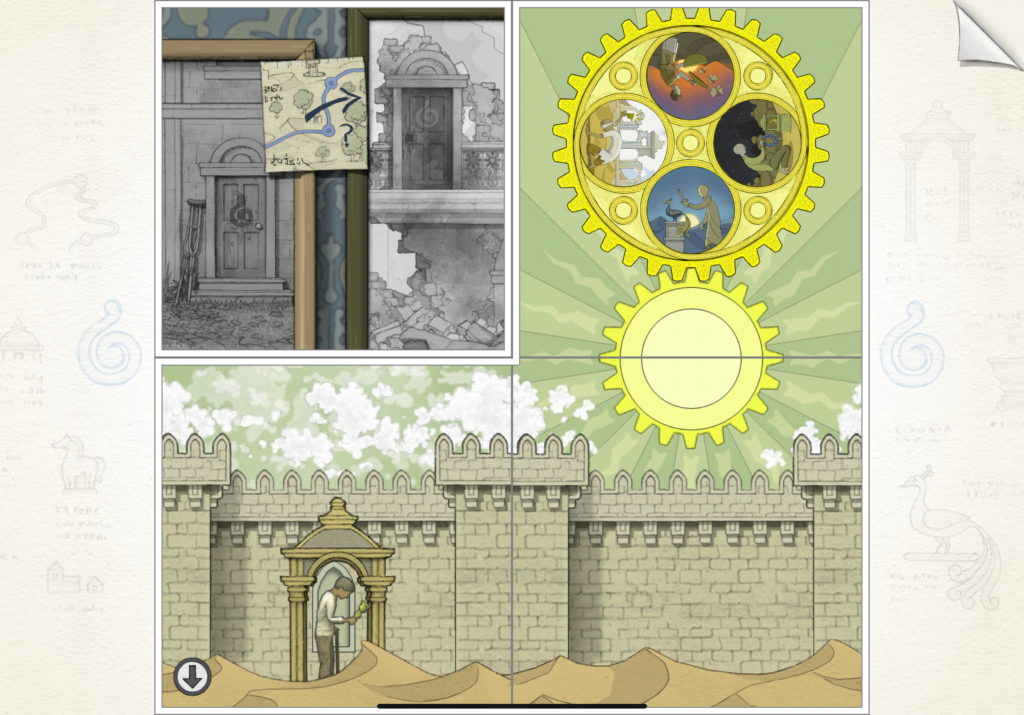
Fig.2 Moving across picture juxtaposes with moving as the gear rotate
Personally, the last task of the game, restoring the five colors of flames, is my favorite, particularly relevant to procedures and boundaries. Through splitting layers of the frame, players “rewind in time” – navigating across boundaries to earlier procedures of the game and relighting the flame that was extinguished in the mind of our protagonist in each stage of his life (Fig. 3). As we revisit familiar spaces and see familiar elements, Gorogoa successfully builds up the final message – despite war, destruction, and suffering, the flame (hope) is never lost; it just needs to be rediscovered, which was genuinely beautiful to me.
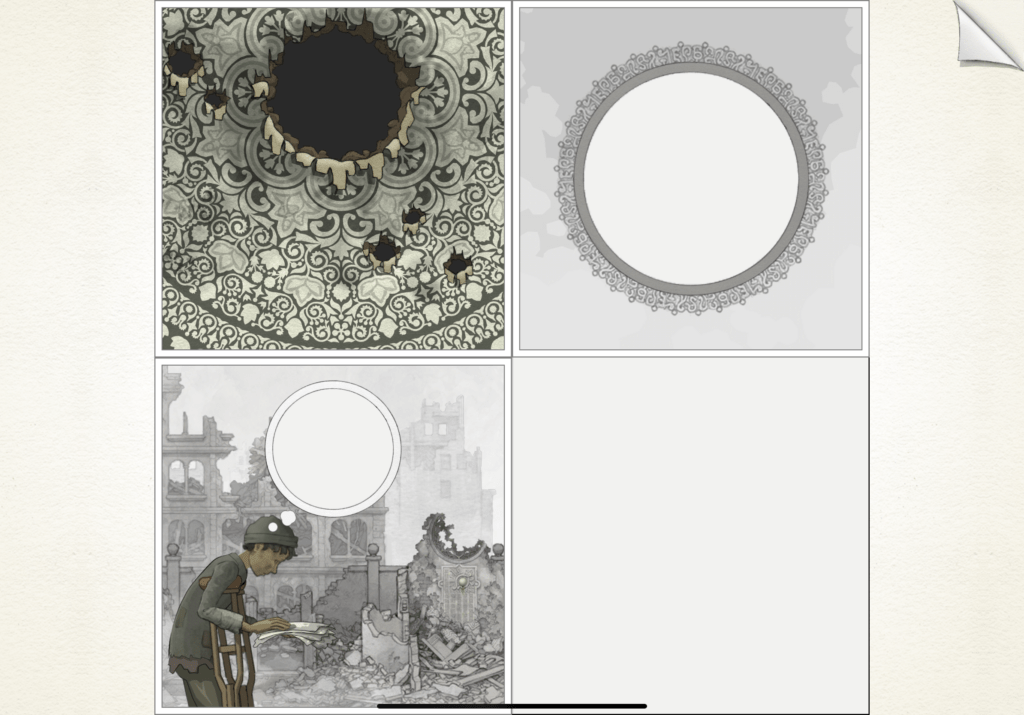
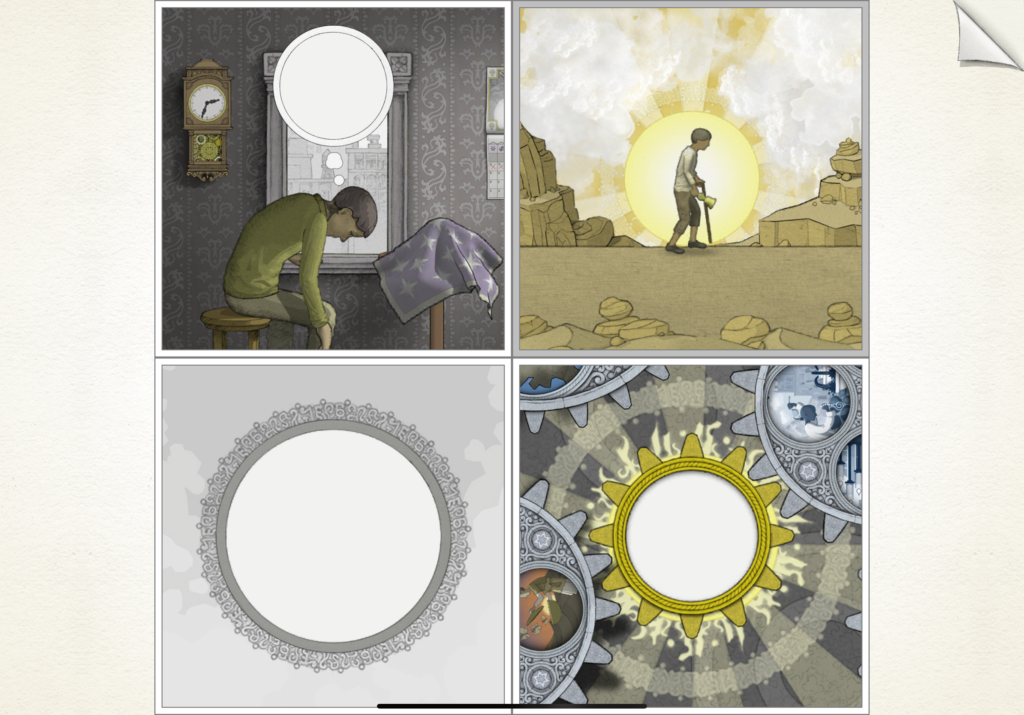
Fig.3 Elements that was present earlier in the game reappear as we “travel back” in time and re-light the flames.
One criticism I have for Gorogoa is the only timed puzzle – the falling stone. I don’t think the puzzle is communicated wisely, especially with a long wait duration before the purple stone falls into the statue’s hand. This is inconsistent with the immediate effect when the frames are successfully connected or overlayed in earlier puzzles. This could lead to potential confusion, making this puzzle too hard to enjoy.


